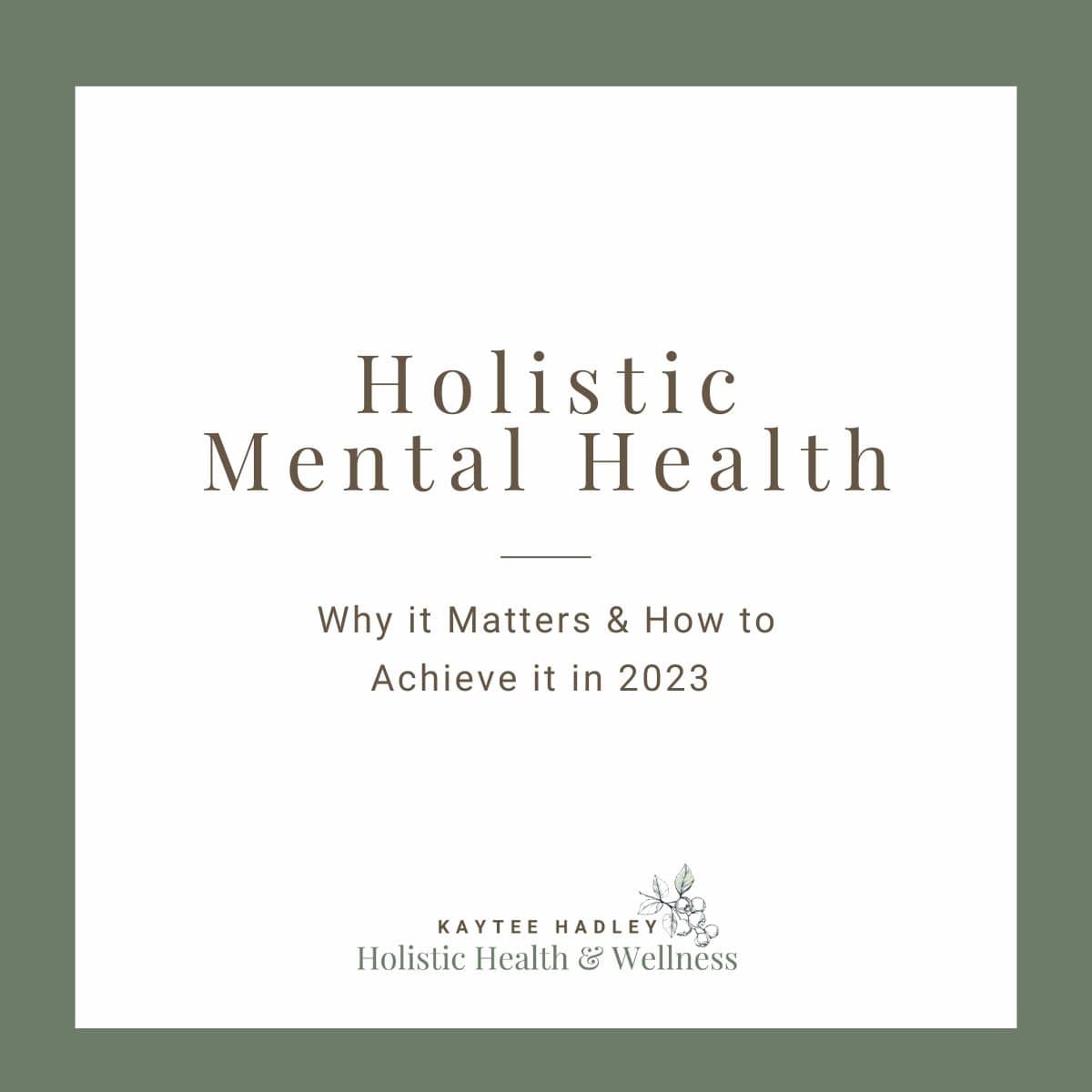This post is coauthored by Sophie Laird, a former intern at Holistic Health and Wellness.
Bloating, stomach pain, and endless food worries? If you’re struggling with small intestinal bacterial overgrowth (SIBO) these feelings are familiar.
Finding a solution to your painful SIBO symptoms is confusing, ask anyone and you will get a different answer on the best thing to do. It can be tricky to navigate, we get it!
The low FODMAP diet is often touted to be the cure to your SIBO tummy troubles but believe it or not, it is not the solution!
Read on to learn what the low fodmap can and can not do for SIBO.
What is SIBO
Table of Contents
Small intestine bacterial overgrowth (SIBO) is an overgrowth of bacteria in the small intestine that causes symptoms in the gut and elsewhere in the body.
While the large intestine has a lot of bacteria, the small intestine should not, so an overaccumulation of bacteria here can interfere with the small intestine’s function and structure.
The overaccumulation of bacteria can reduce the ability of the small intestine to digest and absorb food. Additionally, the damage to the structure of the small intestine can lead to a leaky gut which can cause many food sensitivities and other symptoms.
SIBO Symptoms
The damage to the small intestine can result in symptoms in the digestive tract as well as symptoms throughout the body.
Gastrointestinal (GI) symptoms
- Abdominal bloating
- Gas
- Abdominal pain
- Diarrhea or constipation or alternating between the two
- Nausea and vomiting
- Heartburn or acid reflux
Nutrition-related symptoms
- Food intolerances
- Nutrient deficiencies
- Unintended weight loss
Other symptoms
- Fatigue
- Joint pain
- Depression and anxiety
- Brain fog
- Restless legs
- Rosacea and acne
The most characteristic symptoms of SIBO are chronic bloating, gas and diarrhea and/or constipation.
Getting tested for SIBO
SIBO cannot be diagnosed through symptoms alone as they are commonly seen in many GI issues.
SIBO is prevalent but often not tested for and goes undiagnosed. Many people with SIBO are given the diagnosis of irritable bowel syndrome (IBS) because no underlying cause has been found.
Studies suggest that up to 80% of individuals with irritable bowel syndrome (IBS) have SIBO.
If you suspect you might have SIBO, it is important to work with your gastroenterologist or SIBO-certified healthcare provider to get tested. The most common and reliable test is a 3-hour SIBO breath test.
Can you cure SIBO with diet
SIBO can be eradicated by three different therapies: antibiotics, antimicrobial herbs, and the elemental diet.
The elemental diet is the only diet that has been shown to be effective in getting rid of SIBO completely, but it needs to be done under the supervision of a healthcare practitioner and is not recommended for everyone.
Other diets can kill some of the bacteria by starving them but are not able to get rid of SIBO on their own.
These diets are frequently used alongside other SIBO therapies as they are one of the best tools for symptom relief and can also help with relapse prevention and reduction of die-off symptoms.
Which diet is best for SIBO
There is no specific SIBO diet, but certain foods tend to cause more GI symptoms for individuals with SIBO.
Carbohydrates are bacteria’s primary food source, which when fermented, turn into gas and cause GI symptoms. Additionally, the damaged small intestine results in malabsorption of carbohydrates which can also cause symptoms of bloating, pain, and gas.
One of the best diets for SIBO symptom relief is the low FODMAP diet which works by reducing certain types of carbohydrates and decreasing bacterial fermentation and gas, resulting in symptom relief.
What is the FODMAP Diet
The low FODMAP diet is a short-term elimination food program intended to help individuals with IBS and SIBO identify which foods trigger their symptoms. The FODMAP diet is broken up into three phases: elimination, reintroduction, and personalization.
The low FODMAP diet targets certain carbohydrates that have been found to aggravate symptoms in people with IBS and SIBO. The diet ranks foods according to how fermentable they are (low, moderate, and high) to guide individuals in their choices.
FODMAP is an acronym for the types of carbohydrates and stands for “Fermentable Oligosaccharides, Disaccharides, Monosaccharides, And Polyols”.
- Oligosaccharides: Galactans and fructans are types of these carbohydrates found in many vegetables and some fruits like onion, broccoli, beans, and watermelon.
- Disaccharides: Lactose (a disaccharide) is the sugar in milk. It is found in dairy products such as milk, cheese, and yogurt.
- Monosaccharides: Fructose is the sugar found in many fruits such as apples, mango, and pears as well as fruit juice.
- Polyols: Sugar alcohols are not digestible or absorbable to humans. They are found in many “sugar-free” items but can also be found naturally in some fruits and vegetables like blackberries and mushrooms.
It is important to clarify that just because a food falls into the above categories does not mean it is off-limits. The low FODMAP diet is meant to serve as a guideline for which foods are likely to cause symptoms; however, this does not mean that every food listed will be problematic.
A SIBO dietitian will help you determine which foods are triggering for you and create a sustainable eating plan.
How to do the Low FODMAP Diet
There are three phases to the Low FODMAP diet:
Phase 1: Elimination
The elimination phase lasts 4-6 weeks and involves removing all foods that are considered high FODMAP from your diet and replacing them with low FODMAP foods.
If your body is sensitive to FODMAPs, your symptoms should improve during this time. Below is a chart of FODMAP foods to minimize and low FODMAP food alternatives.
Phase 2: Reintroduction
In phase two, you gradually reintroduce moderate and high FODMAP foods into your diet to identify your trigger foods.
This phase can last between 8-12 weeks and should be done with the help of a SIBO dietitian because it is important to reintroduce foods in a very systematic way to correctly identify trigger foods.
Phase 3: Personalization
The last phase of personalization involves tailoring the diet to your tolerance levels. Avoid labeling foods as “yes” or “no”, but rather identify which foods can be consumed in which portions without aggravating your symptoms.
After you have remedied your SIBO and healed your gut, you can work on reintroducing foods that may have been originally triggering with the help of your SIBO dietitian.
How long to do the low FODMAP diet for SIBO
A common misconception about the low FODMAP diet for SIBO is that it is permanent. This is incorrect. The low FODMAP diet is not a long-term fix and the elimination phase should only be done for 4-6 weeks to identify trigger foods.
The low FODMAP diet is very restrictive, and following the diet for a long time can cause nutrient deficiencies, reduce microbial diversity, and be mentally challenging.
Finding guidance and support
Navigating SIBO is tricky; finding someone to support you through testing, symptom management, getting rid of your SIBO, and preventing relapse can make all the difference in your recovery.
Look online or get a referral from your physician for a SIBO dietitian or healthcare professional trained in SIBO to help you heal.
Schedule a free 15-minute discovery call with Kaytee Hadley MSc RDN IFMCP CPT, functional medicine, SIBO dietitian to discuss your healing journey.
Be mindful of healthcare practitioners who are prescribing the low FODMAP diet as a solution to IBS and SIBO symptoms. The low FODMAP diet needs to be a part of the plan, not the solution!
Takeaways
Bacterial overgrowth in your small intestine can cause a host of problems and painful symptoms but can be mitigated with the help of a professional.
Aside from the elemental diet which should be used with caution, diet alone cannot eradicate SIBO on their own but can be used alongside other forms of therapies to help relieve symptoms.
The low FODMAP diet is a short-term elimination food plan that removes potentially triggering carbohydrates before systematically reintroducing them in order to identify triggering foods.
The low FODMAP diet is not the solution for people struggling with IBS and SIBO but is an excellent tool that can play a role in your healing journey with the support of a SIBO dietitian.
For more information on your SIBO options and the low FODMAP diet, reach out to Kaytee Hadley MSc, RDN, IFMCP, CPT for a free 15-minute discovery call
Bio: Sophie Laird received her bachelor’s degree from University of Texas at Austin in Nutrition Honors and Plan II Honors. In college, Sophie realized the true magnitude and impact of nutrition on gut health and as a future dietitian is committed to taking a personalized approach to nutrition and healing with a strong interest in gastrointestinal health and intuitive eating. Sophie is currently completing her dietetic internship and Master’s in Nutrition, Longevity and Healthspan at the University of Southern California.

Kaytee Hadley MSc RDN IFMCP CPT is a functional medicine dietitian, holistic health coach, and certified personal trainer with a BA in Psychology, MSc in Nutrition, and Institute of Functional Medicine Certified Practitioner. She founded Holistic Health and Wellness to support folks with IBS and chronic GI symptoms who have been let down by the conventional care model to find and address the root causes of their symptoms naturally so they can be symptom free and thrive!


